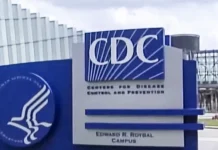
In the spring of 2020, a video of George Floyd being murdered by a Minneapolis police officer went viral. And then — something unprecedented happened: millions filled the streets, marching and demanding the defunding of police, community-centered care, and an acknowledgement that Black lives truly matter — not just on the streets, but in classrooms and school hallways.
School districts responded, too. Publicly vowing to remove armed officers and replace them with counselors, mental health supports, and restorative justice programs. It seemed like the start of a fundamental shift — an end to the criminalization of Black children, and the beginning of a caring, holistic approach to student safety.
But five years later, data on cops in schools reveals that not only have many districts failed to fulfill their promises, but the scope of policing in schools has expanded into surveillance and AI-driven systems that, according to experts, disproportionately police Black kids.
“The question of what has or hasn’t changed in school policing since the murder of George Floyd is more than a policy question — it’s a moral audit,” Dr. David Kirkland, education scholar and CEO of forwardED, tells Word In Black. “And five years later, the receipts are sobering.”
In the immediate aftermath of Floyd’s murder, many school districts nationwide either terminated or significantly reduced their school police programs.
“The rise in alternative school police actors began after George Floyd’s murder,” explains Dr. Terry Allen, an assistant professor of law at the University of Southern California Gould School of Law. “Yet by 2022, many districts that initially removed police from schools reversed their decisions and reintroduced them.”
“What the numbers reveal is that we are not policing danger. We are policing identity.”Dr. DAVID KIRKLAND, education scholar and CEO of forwardED
Out of eight predominantly Black school districts, Chicago Public Schools is the only one to have fully removed police from schools. According to the district’s 2024 evaluation report, removing school police led to measurable gains: reduced suspensions, improved attendance, and improved school climate.
Other large city-based districts, such as New York City, Los Angeles Unified, and Detroit, introduced some reforms — including budget cuts, renaming roles, or reallocating responsibilities — but none removed police entirely.
However, other urban districts, particularly in the South, have doubled down on policing. Atlanta Public Schools, where more than 70% of students are Black, increased its police force from 132 to 177 officers — adding 45 new positions in 2024 alone. Baltimore City and DeKalb County maintained or expanded their school policing presence. And in Florida, state mandates requiring armed officers in every school have made reforms in districts like Miami-Dade County nearly impossible.
This failure to meaningfully reform, Allen says, largely stems from a lack of investment in real alternatives. “Alternatives without the proper training risk becoming just another new form of policing,” he says. “The goal should have always been to create a community of care.”
Kirkland also points to troubling evidence from a 2023 Advancement Project and Alliance for Educational Justice report, which documented over 280 incidents of police violence against students, nearly 60% involving Black youth. In New York City alone, over 90% of school-based arrests involved Black students, despite them comprising only a quarter of the student population.
“These incidents aren’t isolated — they’re systemic,” he adds. “We’re not policing danger. We’re policing identity. And that identity — Blackness — has become suspect in the very spaces it should be safe.”
From Badges to Cameras
Some districts that reduced or removed officers didn’t replace them with counselors or restorative programs — they replaced them with AI tools and surveillance software.
“The consequences of policing, whether through surveillance or physical presence, yield the same outcomes,” says Clarence Okoh, civil rights attorney and senior associate at the Center on Privacy & Technology at Georgetown Law School. “Students still face contact with the criminal legal system — it just may happen through a screen now instead of in the hallway.”
“The goal is to create a community of care — not just one single alternative to fill the role of school police.”
Dr. tERRY aLLEN, assistant professor of law at the USC Gould School of Law
Okoh describes the new surveillance as “policing in disguise” and says that the software intended to support students’ mental health has become a tool of criminalization, where, in some districts, police can access student records in ways that expand discipline beyond school hours.
“Surveillance is easier than care,” he says. “It’s easier to punish a kid than to actually invest in their wellness or academic success.”
A Double Pandemic
Experts note that Black students have endured not just one pandemic, but two. COVID-19 ravaged their communities, stripping many of caregivers and stability. At the same time, the trauma of Floyd’s murder — and the backlash against racial justice efforts — deepened the mental and emotional damage. But instead of schools responding with support, most chose to increase policing.
“COVID-19 was one of the single largest traumatic moments in recent American history,” Okoh says. “We saw the loss of caregivers — parents, grandparents, coaches, essential figures in young people’s lives. Our society brushed this aside, pushing students back into schools without addressing their mental health. That neglect fueled more disciplinary issues, which districts chose to handle with policing rather than healing.”
Dr. Allen agrees, adding that schools faced barriers, too: “The pandemic made it difficult for practitioners to complete professional development and training in alternative safety models. This might explain the backlash and retrenchment we’re seeing,” he says.
“We built entire infrastructures to police kids. There’s no reason we can’t build systems to care for them too.”
cLARENCE OKOH, civil rights attorney and senior associate at the Georgetown law Center on Privacy & Technology
A Blueprint for Healing
While the data is stark, experts say alternatives do exist — and some are working — like the results seen in Chicago and the student-led organizing by groups like the Black Organizing Project in Oakland, CA. But replicating them requires vision and resources.
Allen proposes a “School Governance Model” inspired by emergency medical systems with trained, non-sworn professionals focused on mental health, trauma-informed care, and academic support. “We must replace the infrastructure, not just the actors,” he says.
“Just as we built infrastructure to police kids, we can build infrastructure to care for them,” Okoh adds. “That means rethinking safety entirely — investing in telehealth, peer support, culturally competent staff, and programs that prevent harm rather than react to it.”
And ultimately, at the heart of the issue, Kirkland says, it’s about values and what kind of world we want to build for Black children.
“If we truly believe Black lives matter, then Black childhood must matter — not just in theory, but in practice, in policy, and in budget. Our children deserve more than to be merely protected from violence — they deserve to be protected for possibility.”















